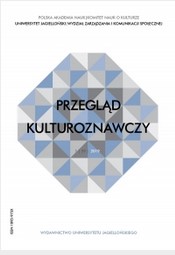Design, czyli o deformującym formowaniu i innych paradoksach projektowania
On deforming forming and other design paradoxes
Author(s): Jan P. HudzikSubject(s): Architecture, Aesthetics, Phenomenology
Published by: Wydawnictwo Uniwersytetu Jagiellońskiego
Keywords: design; design paradoxes; design as a pharmacon; modern existence; visibility; capitalism; consumption; nihilism;
Summary/Abstract: This paper joins the philosophical reflection on design. A historiosophical approach to this phenomenon is complemented by phenomenological descriptions depicting different types of its paradox. Design is considered here as an effect of the impetus for visualization encoded in Western culture and connected with the privileged position of the sense of sight present in this culture. The visibility of things – products – is to restore in modern people a sense of security and to deliver them from the fear of nothingness. Such a historiosophical approach is connected to constructivism, as it combines design with the creation of reality, the creation which consists in imposing form – i.e. human program and project – on (chaotic) things. Main theorem: Thing-form-shaping practices are not neutral with respect to existence and axiology because they also inevitably de-form the world. Questions: What does this paradox mean and in what ways does it emerge, and how is it given in experience? What is the end of all these experiments (with regard to appearances, shapes and forms) conducted on reality or nature? What are the cultural, moral, political or social consequences of reducing the meaning – and existence – of things to their visible shapes?
Journal: Przegląd Kulturoznawczy
- Issue Year: 43/2020
- Issue No: 1
- Page Range: 1-26
- Page Count: 26
- Language: Polish

